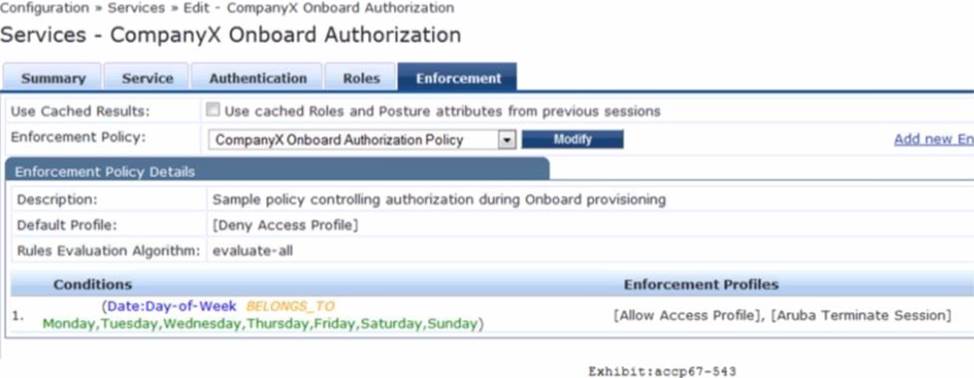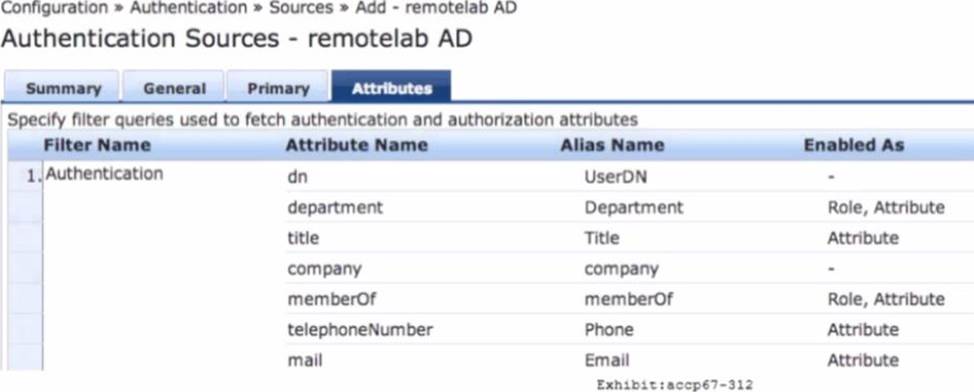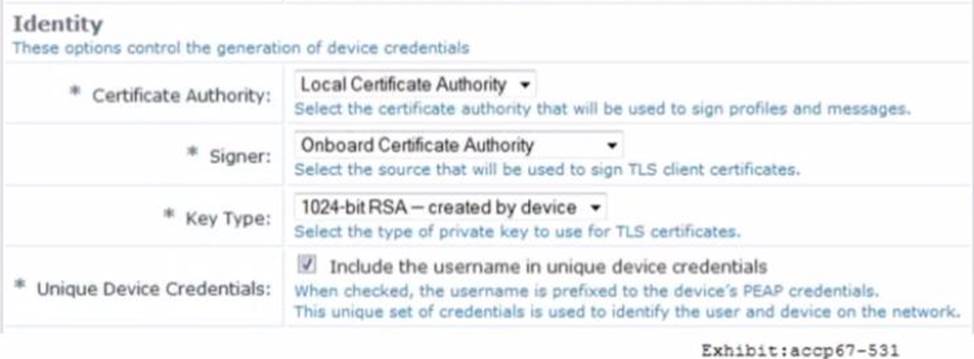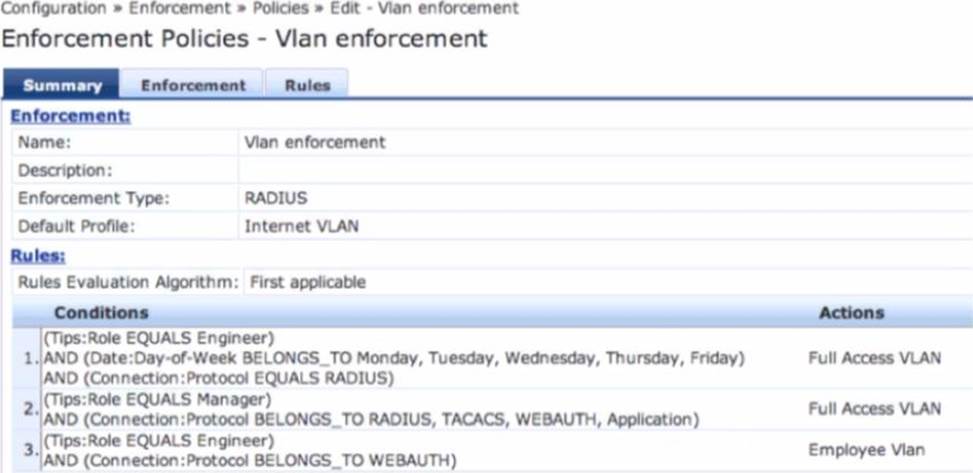HP HPE6-A75 Aruba Certified Edge Professional Exam Online Training
HP HPE6-A75 Online Training
The questions for HPE6-A75 were last updated at Apr 21,2025.
- Exam Code: HPE6-A75
- Exam Name: Aruba Certified Edge Professional Exam
- Certification Provider: HP
- Latest update: Apr 21,2025
cWhich technologies can prevent split brain in a VSF fabric that includes Aruba 2930F switches?
- A . ARP MAD or OOBM MAD
- B . VLAN MAD or ARP MAD
- C . OOBM MAD or LLDP MAD
- D . LLDP MAD or VLAN MAD
Refer to the exhibit.

Based on the configuration of the Enforcement Profiles In the Onboard Authorization service shown, which Onboarding action will occur?
- A . The device will be disconnected from the network after Onboarding so that an EAP-TLS authentication is not performed.
- B . The device will be disconnected from and reconnected to the network after Onboarding is completed.
- C . The device’s onboard authorization request will be denied.
- D . The device will be disconnected after post-Onboarding EAP-TLS authentication, so a second EAP-TLS authentication is performed.
- E . After logging in on the Onboard web login page, the device will be disconnected form and reconnected to the network before Onboard begins.
Refer to the exhibit.

Based on the Attribute configuration shown, which statement accurately describes the status of attribute values?
- A . Only the attribute values of department and memberOf can be used in role mapping policies.
- B . The attribute values of department, title, memberOf, telephoneNumber, and mail are directly applied as ClearPass.
- C . Only the attribute value of company can be used in role mapping policies, not the other attributes.
- D . The attribute values of department and memberOf are directly applied as ClearPass roles.
- E . Only the attribute values of title, telephoneNumber, and mail can be used in role mapping policies.
An administrator wants to use Airwave to manually add devices on the network.
Where should the administrator perform this action?
- A . in Device Setup
- B . in Groups
- C . in AMP Setup
- D . in Devices
Refer to the exhibit.

Switch-1 and Switch-2 connect on interface A23. The switches experience a connectivity issue. The network administrator sees that both switches show this interface as up. The administrator sees the output shown in the exhibit on Switch-1.
What is a typical issue that could cause this output?
- A . a hardware issue, such as a broken cable
- B . asymmetric routing introduced by a routing configuration error
- C . an issue with queuing, caused by mismatched QoS settings
- D . mismatched IP addresses on the VLAN for the link
An administrator supports a RAP to a branch office. Employees at the branch office connect to an employee SSID that allows for split tunneling of the employee traffic. The RAP initially connects to the corporate office controller, but later loses connectivity to it.
Which operating mode should the administrator configure for a secondary SSID to be advertised during the loss of connectivity?
- A . Standard
- B . Persistent
- C . Always
- D . Backup
Refer to the exhibit.

Based on the configuration for the client’s certificate private key as shown, which statements accurately describe the settings? (Select two.)
- A . More bits in the private key will increase security.
- B . The private key for TLS client certificates is not created.
- C . The private key is stored in the ClearPass server.
- D . More bits in the private key will reduce security.
- E . The private key is stored in the user device.
Refer to the exhibit.

Based on the Policy configuration shown, which VLAN will be assigned when a user with ClearPass role Engineer authenticates to the network successfully on Saturday using connection protocol WEBAUTH?
- A . Deny Access
- B . Employee VLAN
- C . Internet VLAN
- D . Full Access VLAN
An administrator creates service-based policies for AirGroup on the Mobility Master (MM).
The administrator can define location-based policy limits based on which information?
- A . AP names, AP groups, controller names, and controller groups
- B . AP Fully Qualified Location Names (FQLNs) and controller Fully Qualified Domain Names (FQDNs)
- C . AP names, AP groups, and AP Fully Qualified Location Names (FQLNs)
- D . Controller names, controller groups, and controller Fully Qualified Domain Names (FQDNs)
A network administrator can set the OSPF metric-type on an AOS-Switch to Type 1 or Type 2.
What is the difference?
- A . A Type 2 metric marks external routes that can be advertised in NSSAs, while a Type 1 metric marks external routes that can only be advertised in normal areas.
- B . A Type 2 metric assigns cost 1 to a 100 Gbps link, while a Type 1 metric assigns cost 1 to all links of 100 Mbps or higher.
- C . A Type 2 metric is assigned to multiple external routes that are aggregated together, while a Type 1 metric does not permit external route aggregation.
- D . A Type 2 metric stays the same as the external route is advertised, while a Type 1 metric increments with internal OSPF link costs.
Latest HPE6-A75 Dumps Valid Version with 60 Q&As
Latest And Valid Q&A | Instant Download | Once Fail, Full Refund

